Nepal needs to enact and enforce animal law
Legislation to address neglect, cruelty and abuse of street dogs, wildlife, as well as animals used for food, work, and sacrificeFrom the suffering of breeding dogs in puppy mills, or the abandonment and neglect of street dogs, or the cruelty that is often inflicted upon these innocent animals, we come across stories of animal abuse almost every day.
They are stories of not just beloved pets but also of wildlife such as elephants, rhinoceros and tigers, and those in captivity like zoos and ‘rescue centres’. Most of these do not have a happy ending.
A year ago, four students from Kathmandu University School of Law worked on research papers with a grant from the Center for Animal Law Studies at Lewis and Clark Law School as part of the Global Ambassador Program to help raise awareness about animal law in Nepal.
The project in partnership with an initiative called SAVE Nepal aims to integrate the field of animal justice into the law schools in Nepal.
Animal law is an interdisciplinary field of law that governs the legal relationships between humans and non-human animals, and draws from disciplines like criminal law, property law, environmental law, contract law and constitutional law.
Animal law addresses a wide range of topics—from anti-cruelty laws that exist in many countries, to wildlife conservation laws, such as Nepal’s National Parks and Wildlife Conservation Act of 2029 (1973).
Other laws may exist to protect the well-being of animals raised for food or used for work in both agriculture and even tourism. Many countries also have laws and regulations controlling the transport and slaughter of animals used for food, and those intended to protect the welfare of animals sold in pet stores or raised by breeders.
The students selected topics that were of interest to each of them and each wrote a short proposal about how they planned to conduct their research.
Sweekriti Sharma looked into street dogs, examining whether there are any specific laws protecting their welfare. Ayusha Yogi, investigated legal protection for working animals: existing laws and directives, or lack thereof.
Pariksha Dhungana explored the issue of wildlife poaching and its impact on biodiversity. Rabindra Acharya tackled the sensitive topic of cultural sacrifice with a focus on Gadimai, a festival widely criticized for its brutality, and even the subject of a 2016 Supreme Court case.
The students also prepared short presentations about their research for the first-ever animal law seminar in Nepal at Kathmandu University School of Law earlier this year. A playlist with videos of each of the talks can be found on the SAVE Nepal YouTube channel.
---
Legal protection and care of street dogs
Swikriti Sharma
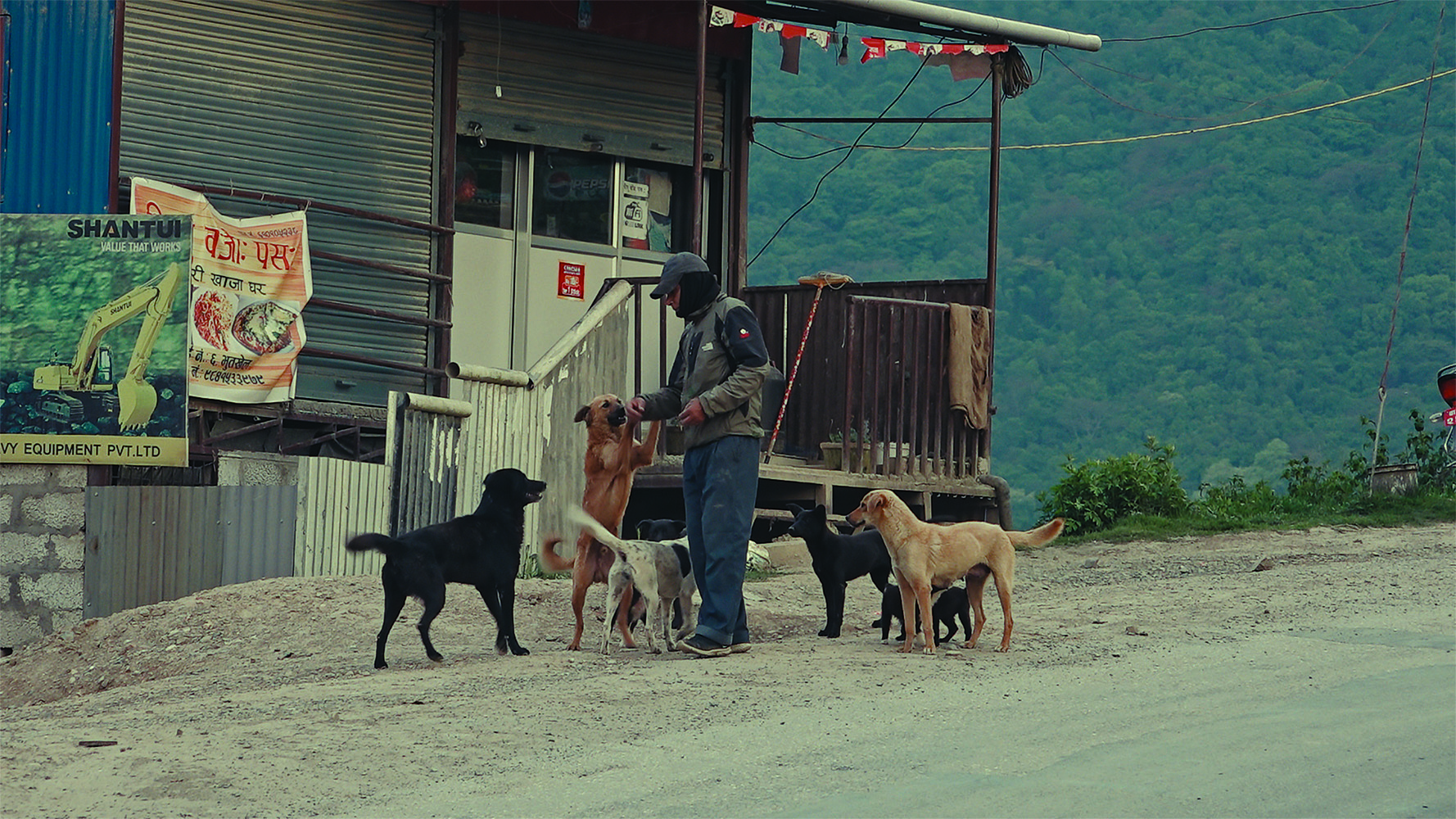
Street dogs are a significant and unavoidable component of both urban and rural landscapes throughout Nepal. While they are part of the ecosystem, the lives of the dogs are frequently marked by extreme hardships, including malnutrition, disease, abandonment, exposure to harsh environmental conditions, accidents on the roads, and deliberate cruelty inflicted by humans.
Nepal has a few legislative provisions to protect animals, including general clauses in the Muluki Civil Code, 2074, and Muluki Criminal Code, 2074. The Criminal Code prohibits acts of cruelty against animals, specifying that intentional harm or neglect may result in punishment under the law.
The Animal Welfare Directive of 2016 outlines standards for ensuring the physical and mental welfare of animals, emphasising freedom from hunger, thirst, fear, distress, injury, pain, and the ability to express natural behaviours. A directive is not a law, however, and is not legally enforceable.
In addition, these provisions are not specifically tailored to address the unique needs of street dogs and the directive is, in fact, limited to pack and traction animals used for transportation of goods or used in commercial and agricultural/industrial activities with a business/trade motive where weight is to be carried or pulled by the animals. . The directive exists largely on paper, and is rarely implemented, creating a legal vacuum wherein these animals remain vulnerable to mistreatment.
Local governments are assigned responsibility for managing stray animals under the Local Government Operation Act 2017, yet clear strategies, budgets, and enforcement mechanisms are often missing. As a result, municipal authorities handle street dogs in varying ways with some even resorting to poisoning, beating, or uncontrolled culling.
This highlights the need for a dedicated, comprehensive legal framework that explicitly protects street dogs and ensures standardised implementation across all regions.
Due to the limitations and inconsistencies in governmental support, several non-governmental organisations have emerged as key actors in the welfare of street dogs in Nepal, working at the intersection of rescue, rehabilitation, sterilisation, and community education.
Sneha’s Care, founded in 2015, actively rescues injured and abandoned street dogs, provides veterinary care, and facilitates adoption programs, thereby improving the quality of life for many animals. The Kathmandu Animal Treatment Centre (KAT Centre) has worked since 2004 to reduce the street dog population through spaying and neutering campaigns, it also provides medical treatment and conducts public educational programs.
The Nepal Street Animal Rescue (NSAR), collaborates with local NGOs and international partners to support large-scale sterilisation drives, vaccination programs, and rescue operations.
Despite this, these groups face challenges like limited funding, insufficient governmental collaboration, and logistical constraints in reaching remote or densely populated urban areas. Their success often depends on community support, volunteer engagement, and external funding.
In Kathmandu and Lalitpur, local residents actively participate in feeding, monitoring, and caring for street dogs. Community-driven initiatives, such as organised feeding programs, vaccination drives, and public awareness campaigns, have shown measurable benefits in improving the well-being of street dogs.
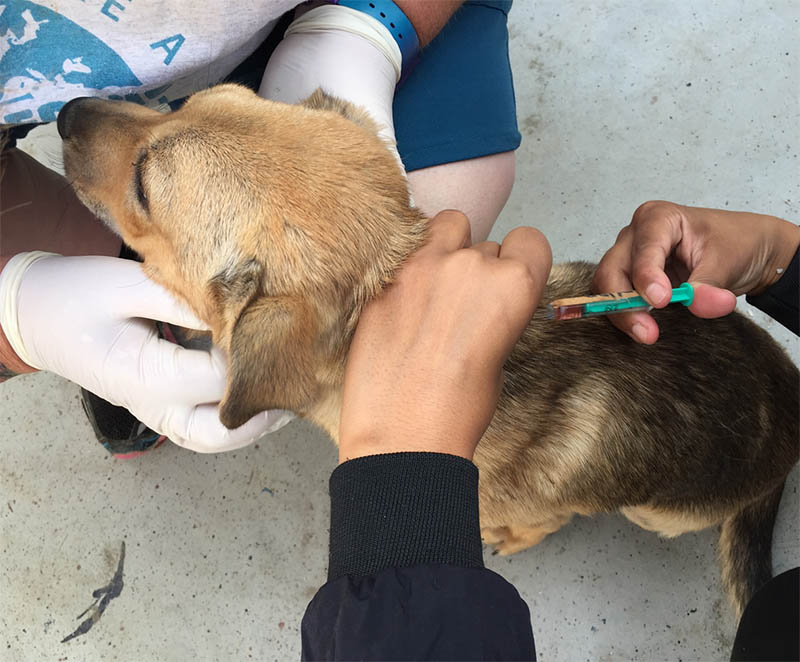
Educating the public about responsible pet ownership, the importance of sterilisation, and humane treatment of animals can also foster a culture of compassion and empathy, reducing incidences of cruelty and neglect.
The perception of street dogs as threats or nuisances, often fuelled by misinformation or fear of diseases such as rabies, can lead to violent actions against these animals.
These measures can ensure the protection and humane treatment of street dogs:
1. Legal provisions that clearly define the rights and protection of street dogs mandating humane treatment, penalties for cruelty, and requiring municipalities to implement standardised welfare programs.
2. Specialised training for local authorities and law enforcement personnel on animal welfare laws, humane handling practices, and reporting procedures.
3. Comprehensive and well-funded spaying, neutering, and vaccination programs for street dogs are essential for controlling population growth and preventing the spread of infectious diseases, including rabies.
4. Government agencies should actively collaborate with NGOs and local communities to pool resources, share expertise, and implement coordinated welfare initiatives.
5. Nationwide campaigns should educate citizens about the ecological, social, and ethical importance of street dogs, encouraging responsible behaviour and community participation in animal welfare efforts.
6. Incorporating lessons on animal rights, compassion, and humane treatment into school curricula can foster long-term cultural change.
---
Neglect of working animals
Ayusha Yogi
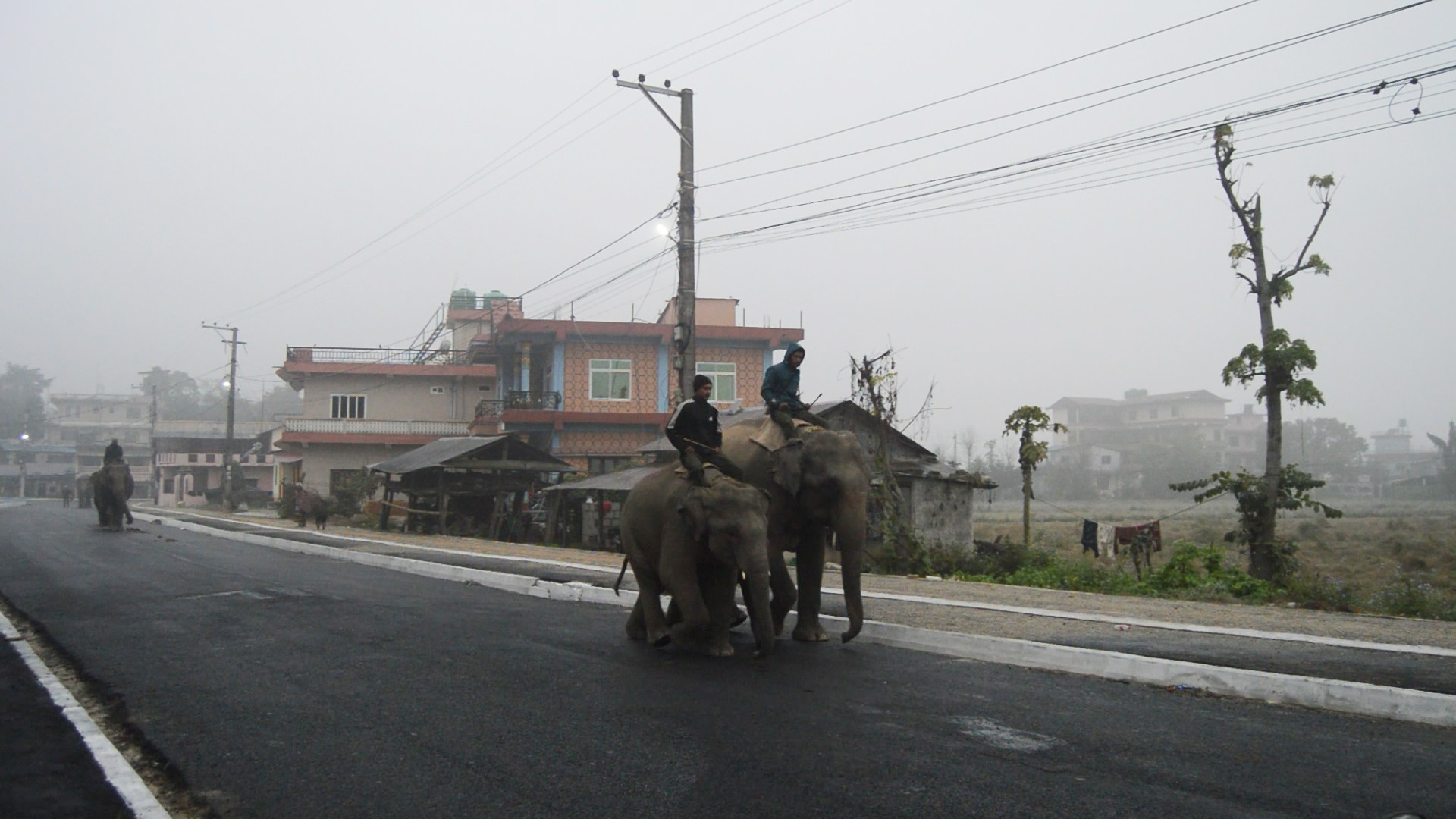
From the fields of Tarai to the brick kilns of Kathmandu, from Chitwan’s jungle safari to trekking trails, working animals remain Nepal’s largest yet most neglected workforce.
Oxen and buffaloes are still used to plough fields, sometimes working continuously for 12–14 hours. They often die of overwork and neglect.
In brick kilns, thousands of donkeys and mules are forced to work under heavy loads continuously. According to a 2023 report published in the Nepal Journal of Agricultural Sciences, around 25 donkeys die every year due to extreme exhaustion and suffering.
Elephants in Chitwan are forced to carry tourists for long hours under the scorching sun. Baby elephants are separated from their mothers and subjected to a cruel training in which they are starved, beaten, and intimidated. Elephants are used in festivals for football games, beauty contests, or other forced performances.
In Taruka in Nuwakot a bullfighting festival leads to the animals suffering broken horns, deep wounds, and long-term injuries. The defeated bulls are sometimes left neglected.
The Animal Welfare Directive 2073 (2016) mentions ‘Five Freedoms’ – freedom from hunger and thirst, freedom from discomfort, freedom from pain, injury, and disease, freedom to express normal behaviour, and freedom from fear and distress.
However, as noted above, these are not legally binding. Fines under the Penal Code are minimal, and enforcement is weak. Laws protect wild elephants but are silent about elephants used in tourism.
Moreover, enforcement agencies show little sensitivity. When individuals attempt to report animal cruelty, the police do not take it seriously unless humans are directly affected. Complaints are sometimes outright neglected or limited to ‘settlement’.
Policy-making is often too uncaring to come up with animal welfare laws. There are exceptions: Ratnanagar Municipality last year adopted humane transport standards, reducing excessive loads on donkeys, mules, and oxen, benefiting over 700 buffaloes.
In 2025, Lalitpur’s Mayor Chiribabu Maharjan launched Nepal’s first government funded animal ambulance for rescue and treatment for injured or sick animals.
At a National Animal Law Interaction program in May, MPs committed to registering the Animal Welfare Act in Parliament within two months. The draft of the Act was announced in July, but it has not yet been made public.
In Nepal, laws remain scattered – only directives exist without binding legislation. Fines are too low. Nepal can learn from India to pass a clear and comprehensive law that directly protects working animals’ rights, and a judicial approach that respects both cultural traditions and animal rights while maintaining balance.
The suffering of working animals is not just physical. Captive elephants often display ‘stereotypic behaviours’ like repetitive head-shaking or pacing. Donkeys and bulls may become aggressive or depressed. Continuous abuse leads them to ‘learned helplessness’, a state of accepting pain without resistance.
This is not just a matter of compassion. Economically, the international tourism market is increasingly ethical. Platforms like TripAdvisor have already banned elephant rides. If Nepal continues cruel practices, there may be a boycott.
Nepal must enact and enforce a comprehensive Animal Welfare Act, impose stricter fines, train police and veterinarians, and hold local governments directly accountable. Mechanisation in agriculture, electric transport in tourism, and alternative employment for poor communities can reduce the burden on animals.
The truth is simple: animals are not machines. They feel hunger, thirst, fear, and pain, as much if not more than humans.
---
Protecting our wilderness
Pariksha Dhungana
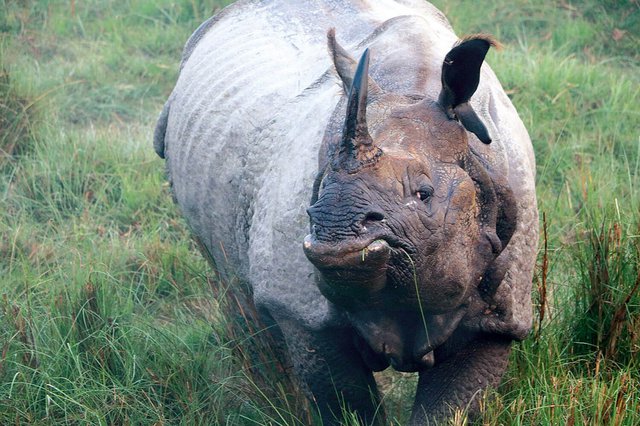
Nepal is home to more than 118 ecosystems and over 900 bird species, same as the entire continental US. Nepal is also the source and transit for the illegal wildlife trade affecting livelihoods, the economy and ecosystems.
Rhino horns are smuggled to foreign markets, tiger skins are sold as luxury status symbols despite international treaties banning their trade. Elephant tusks are carved into ornaments. Even smaller animals like pangolins, deer, and wild birds are killed for meat and body parts.
Thankfully, Nepal’s conservation movement reversed much of the damage from past hunting expeditions and poaching. In 2011, the country celebrated its first ‘zero poaching’ year for rhinos, a milestone repeated in 2014 (WWF Nepal, 2015). Military patrols, community involvement, and strict laws made Nepal a global model of conservation.
But during the Covid lockdown, poachers saw it as an opportunity to hunt again and four rhinos were killed in 2020 in Chitwan National Park. It was clear that without constant vigilance, progress can vanish overnight. Tigers are at the top of the food chain, and fall in their numbers affects the ecosystem.
When an elephant walks, it doesn’t only move but scatters seeds that grow into a very tree that make up a forest. Tigers keep the population of other animals under control. Rhinos shape grasslands that other animals depend on. An absence of one species disrupts an entire ecosystem.
Tourism is also at stake. Nepal’s wildlife tourism contributes nearly 7% of GDP. Visitors come to see rhinos, elephants, and tigers, so if these animals disappear so will eco-tourism and thousands of local jobs.
From many communities, animals represent strength, wisdom, or guardianship. Losing them means losing a part of our identity and culture.
Nepal has some of the strictest laws in Asia regarding poaching, with penalties up to 15 years in prison. But poaching persists because many poachers are poor villagers hired by international networks to sell rhino horns, tiger pelts and elephant tusks in the international black market. Nepal’s rugged terrain and location next to India and China make smuggling easy, and corruption further fuels the trade.
In Chitwan, locals recall seeing female elephants wandering into villages and harming human lives. Male elephants had been poached for tusks. With no males left, reproduction declined, and females moved dangerously close to human areas.
At the same time, true zero poaching means protecting all species, not just flagship mammals. Nepal needs to learn from other countries to combine strict enforcement, modern technology, and community empowerment.
A strong Wildlife Crime Control Act with tougher penalties for criminal trafficking networks needs to be implemented. Border surveillance to stop smuggling has to be enforced, while providing alternative livelihoods for villagers.
Other measures include creating awareness campaigns linking biodiversity to human survival and enforce the law to protect all species, not only rhinos and tigers.
Poaching is a crime against nature, culture, and humanity. Behind every poacher’s act lies a chain that threatens Nepal’s economy, ecosystems, and communities.
---
Law and morality
Rabindra Acharya
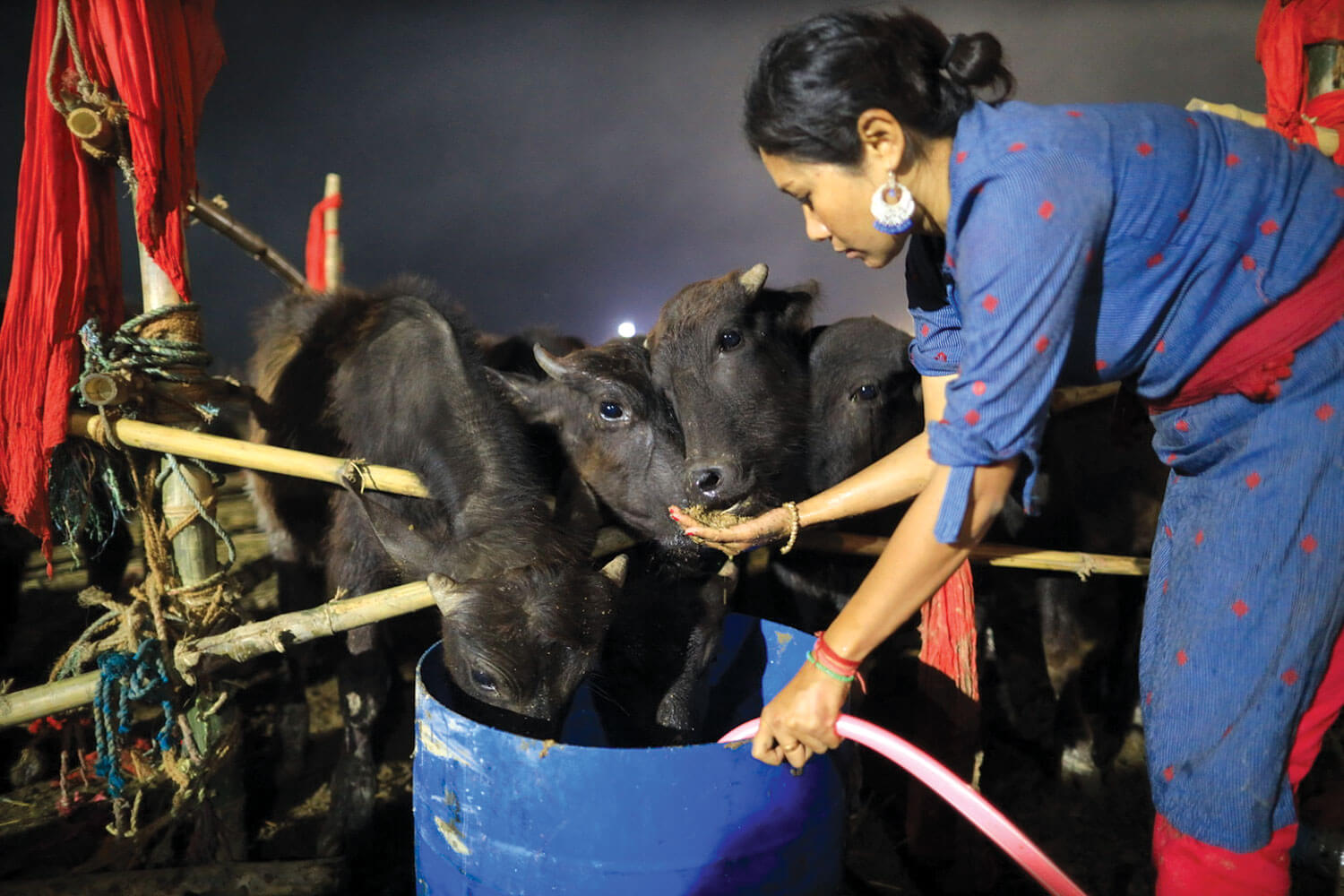
Animal sacrifice remains a deeply controversial issue, demanding serious research to inspire change in social norms and traditions.
Nepal has earned international notoriety because of the publicity surrounding the largest animal sacrifice at the Gadimai temple. During Dasain, hundreds of animals are sacrificed at the Taleju temple in Kathmandu, and there are mass sacrifices at temples such as Dakshinkali, Rajdevi, and Khadadevi.
The exact origin of animal sacrifice is unclear, although the Vedas mention rituals such as the Ashvamedha, Gomedha, and Agnyadheya, in which horses, cows, or bulls were sacrificed to appease the gods. However, in texts like the Mahabharata and Ramayana, the Ashvamedha Yajna is described not as an act of animal sacrifice but rather as a ritual to demonstrate a king’s power.
On the other hand, Hinduism also upholds the principle of Ahimsa Paramo Dharmaḥ (nonviolence is the highest duty), showing an inherent contradiction within the tradition. In the Bhagavad Gita, the offering of a leaf, flower, fruit, or water is considered the purest form of devotion, which suggests that sacrifice need not be literal but symbolic. I
Various studies show that large-scale slaughter creates environmental pollution, foul odor, and increases the risk of diseases like cholera, tuberculosis, and anthrax. Psychologists have found that children exposed to such violent scenes may suffer trauma, lose compassion, and develop violent tendencies.
Animal sacrifice also reinforces caste-based discrimination: higher castes often abstain from eating sacrificial meat, considering themselves ‘pure’, while Dalit communities are compelled to consume it, thereby reinforcing their social marginalisation.
Nepali law focuses largely on the protection of cows, oxen, and wildlife, while legal provisions specifically addressing sacrifice are minimal. The Constitution of Nepal 2015 guarantees the right to religious freedom, which means people can continue their traditional rituals. However, Article 30 of the Constitution ensures the right to live in a clean environment, and Article 35 guarantees the right to health. Large-scale sacrifices can be seen as violating these rights.
The Criminal Code 2017 prohibits animal slaughter in public places but allows it in religious sites where it is a traditional practice. This reflects a legal balance between animal rights and public health on one side and cultural preservation on the other.
Similarly, the Animal Welfare Directive 2016 requires that animals be protected from hunger, fear, pain, and disease. The Meat Inspection Act 1998 mandates quarantine and health checks for meat, but enforcement is weak.
Legally, animal sacrifice is not considered wrong as it is rooted in centuries-old tradition and safeguarded by religious freedom. Yet, customs should evolve with time, especially when they conflict with modern moral and social values.
Exploring nonviolent alternatives becomes essential, and Hindu scriptures themselves endorse offerings like fruits, flowers, coconuts, and food in place of animal sacrifice. Practices such as the Mahaprasad at Jagannath temple and the free vegetarian meals at Amritsar’s Golden Temple highlight that faith and devotion can be meaningfully expressed without violence.
The research papers were carried out with a grant received by Julie Palais, PhD and advocate Varnika Singh from the Center for Animal Law Studies at Lewis and Clark Law School as part of the Global Ambassador Program.




